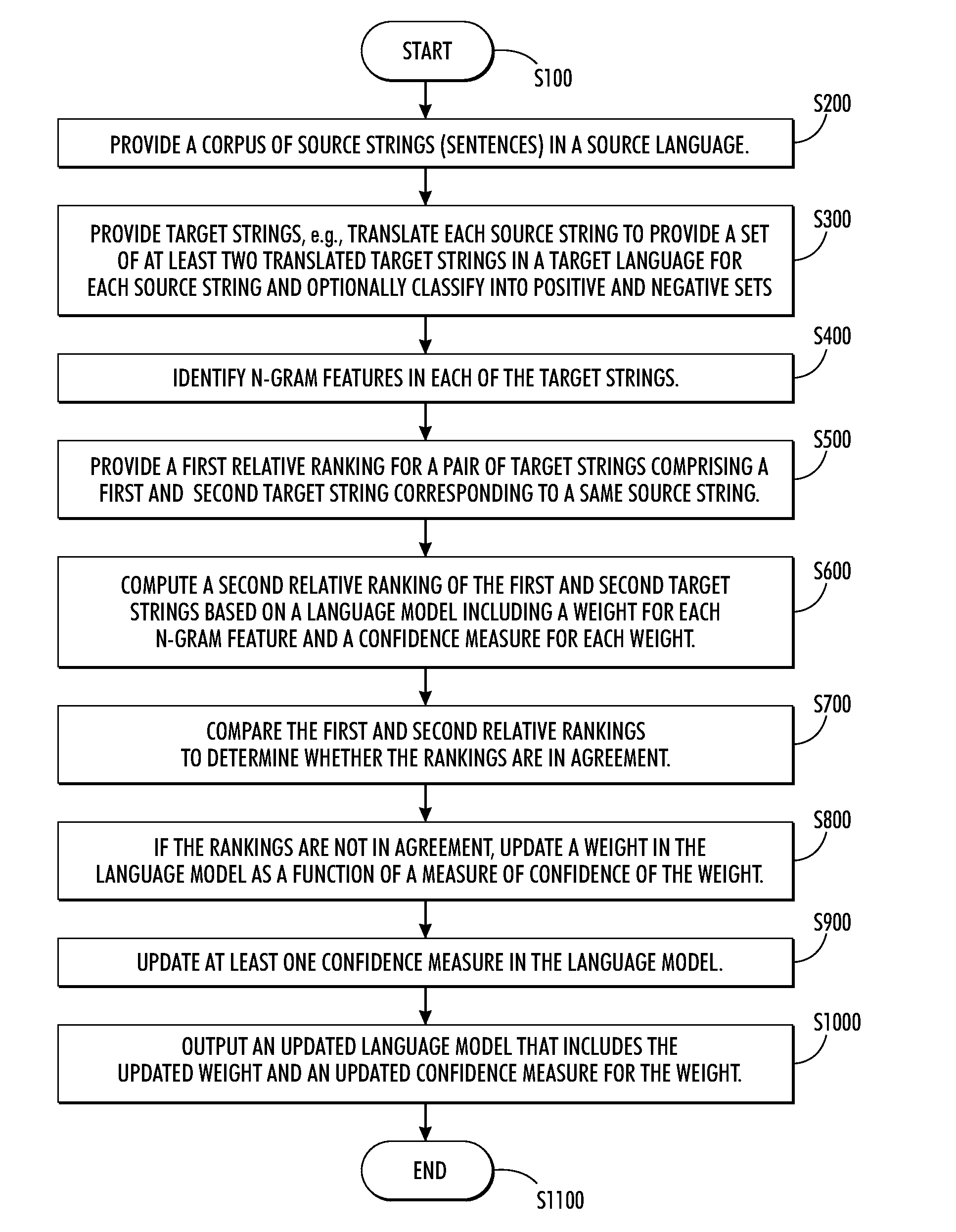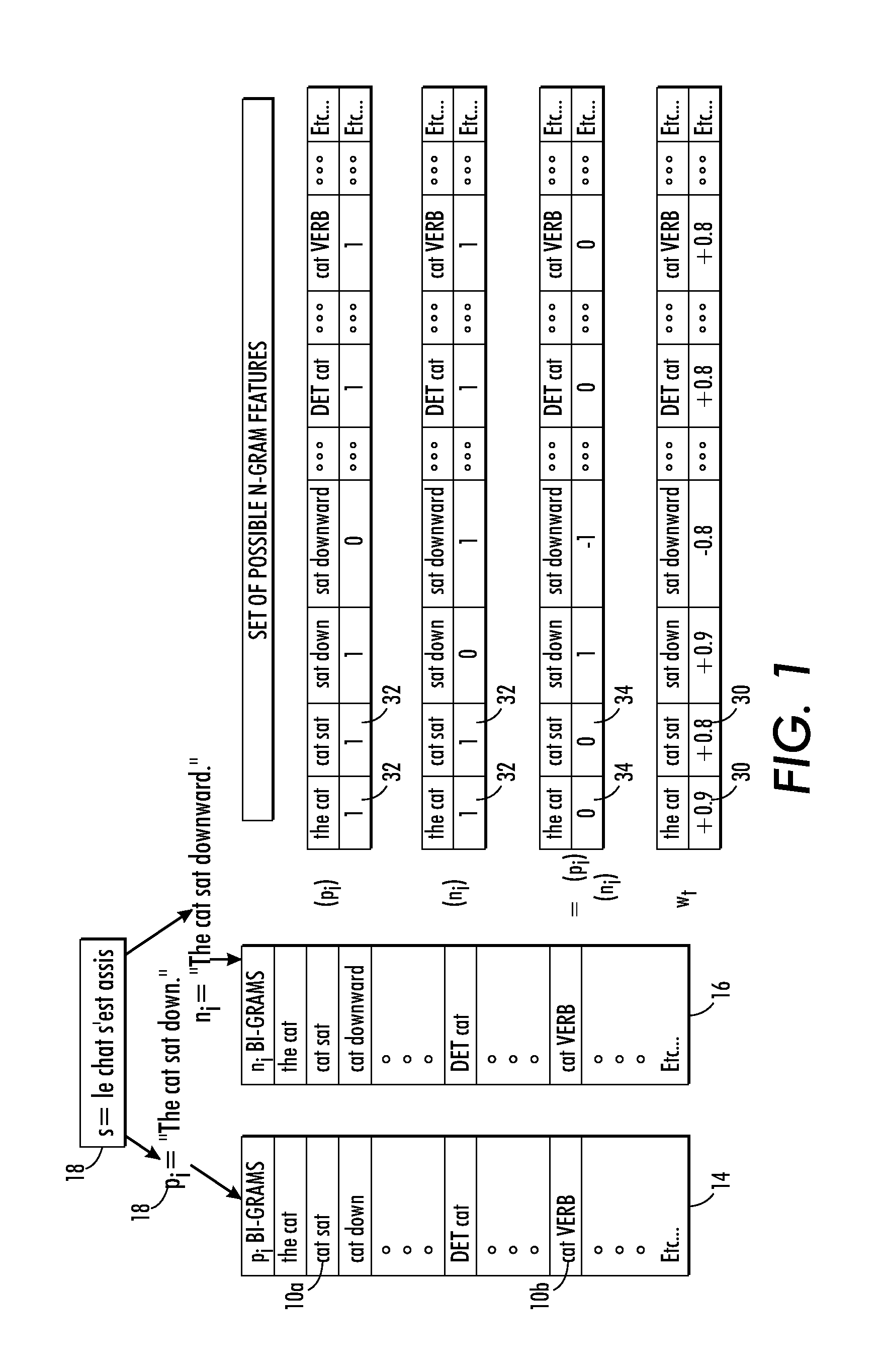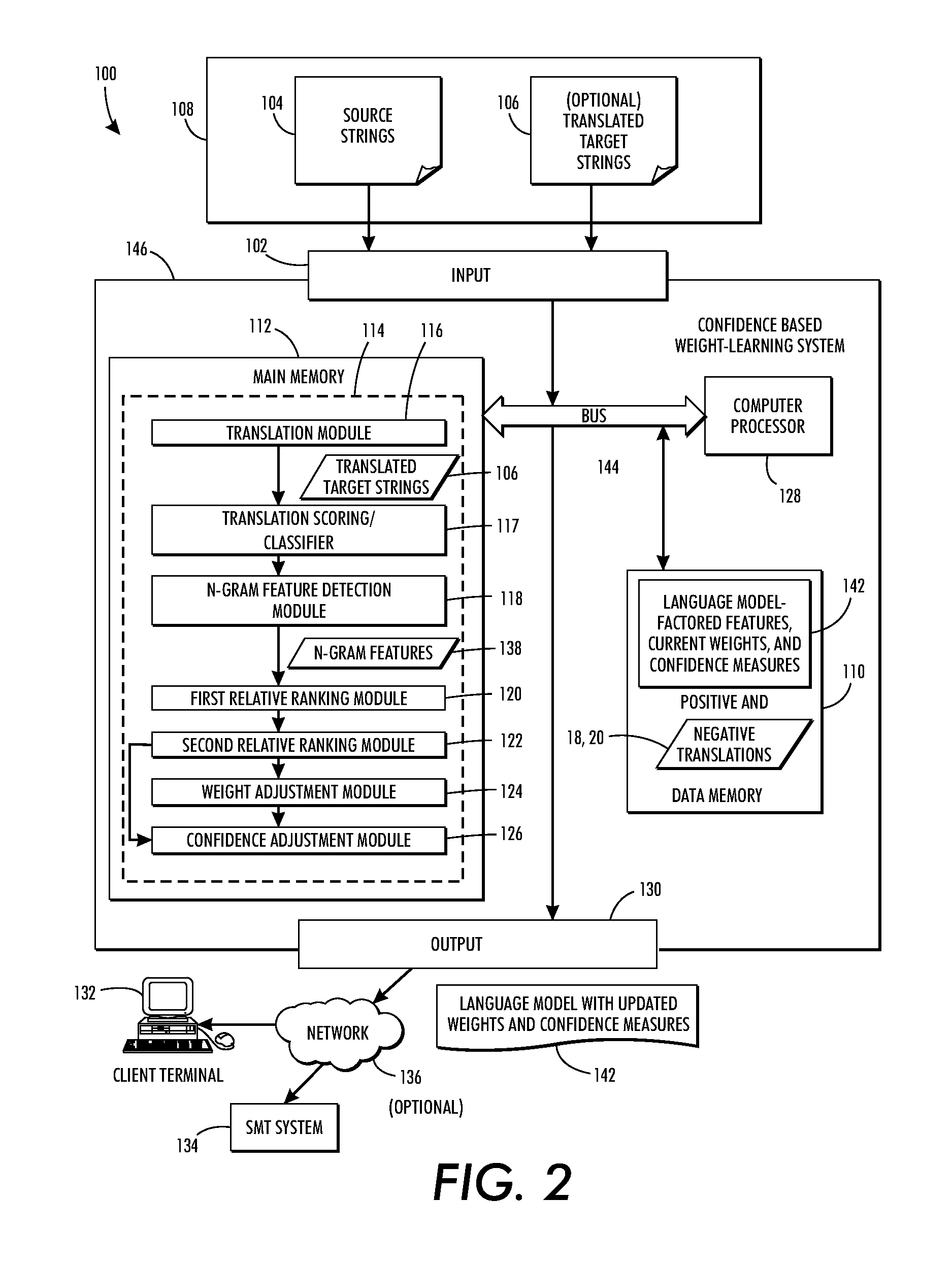Method and system for confidence-weighted learning of factored discriminative language models
a language model and confidence-weighted learning technology, applied in the field of machine translation, can solve the problems of inability to benefit from available linguistic knowledge sources, language models tend to suffer from poor estimates of rare features
- Summary
- Abstract
- Description
- Claims
- Application Information
AI Technical Summary
Benefits of technology
Problems solved by technology
Method used
Image
Examples
examples
[0093]The exemplary method and system 100 have been empirically validated. In a first experiment, the effectiveness of the method was measured by deciding, given a pair of candidate translations for a same source sentence, whether the first candidate is more fluent than the second, or vice-versa. In a second experiment, the discriminative language model (DLM) 142 provided by the exemplary method was compared against alternative algorithms in terms of impact on NIST and BLEU scores.
Evaluation Dataset
[0094]A large training set was used in the experiments. The training set includes a parallel corpus between Spanish and English, and contains 1,240,774 sentence pairs (after applying some basic filtering to rule out trivial instances). Additionally, a development set and test set each containing around 1,000 sentence pairs was used.
[0095]The training set and development set were used to train an SMT system 134. The data for training the DLM was obtained by taking a random subset of the pa...
PUM
 Login to View More
Login to View More Abstract
Description
Claims
Application Information
 Login to View More
Login to View More - R&D
- Intellectual Property
- Life Sciences
- Materials
- Tech Scout
- Unparalleled Data Quality
- Higher Quality Content
- 60% Fewer Hallucinations
Browse by: Latest US Patents, China's latest patents, Technical Efficacy Thesaurus, Application Domain, Technology Topic, Popular Technical Reports.
© 2025 PatSnap. All rights reserved.Legal|Privacy policy|Modern Slavery Act Transparency Statement|Sitemap|About US| Contact US: help@patsnap.com



